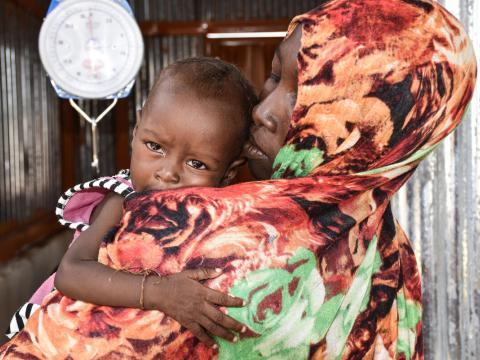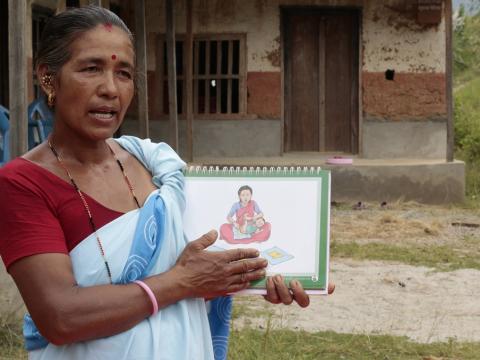
There's no excuse, it's time to deliver on nutrition
As N4G approaches, Dan says there's no longer any reason for the world to not address malnutrition: the solutions are known and could save 3.7m lives.
By Dan Irvine, Senior Director, Health and Nutrition
In 2019, I had the privilege of participating in a small delegation meeting with Government of Japan cabinet heads to talk about their support for the Nutrition for Growth process and summit. While speaking with the Assistant Minister for Foreign Affairs, he asked us to briefly summarize what was needed to eliminate malnutrition. We fumbled, each of us awkwardly evoking diverse issues ranging from agriculture practice to breastfeeding to gender equality. We simply were not prepared to translate this complex issue into a simple message for a non-nutritionist.
Nutrition interventions have been broadly categorized as “nutrition-direct,” those that specifically have a direct impact on nutritional status, and “nutrition-indirect,” those that address underlying factors like food systems and water and sanitation systems. Human nutrition and health, across the lifecycle, have traditionally been a concern for public health systems. Malnutrition, expressed typically as underweight, overweight, wasting, stunting and micronutrient deficiency, is most often assessed and treated in health systems, and health actors usually lead prevention and promotion work. These are the “nutrition-direct” actions.
At the same time, while we consider nutrition-direct actions to be a requirement of health systems, those systems have often done a poor job of assimilating and delivering them. This is extremely problematic, as no one else is going to assume these responsibilities. I’m talking, for example, about services like appropriate breastfeeding counselling, growth monitoring and promotion, and treatment of wasting. The World Health Organization (WHO) has done an excellent job of codifying these nutrition services to be delivered through health systems across the lifecycle in their Essential Nutrition Actions: Mainstreaming nutrition through the lifecourse framework and guidance. They have provided a detailed yet easy to follow checklist for health systems to develop and monitor implementation of these fundamental services.
Nutrition, however, seems to be the black sheep of the health system family, struggling to achieve prioritization among other routine health services. One example is in the establishment of the “Baby- Friendly Hospital Initiative” – a ten step certification process to ensure that pregnant women and new mothers access appropriate infant and young child feeding counselling and practices, and are protected from common malpractices, such as promotion of infant formulas. In 2018, the WHO reported only 10 per cent of hospitals having this certification.
Another example is in deficits in expert nutrition-specific human resource. The recommended density of nutritionists per 5 million population is 100 to 500 at bachelor’s degree or license-level qualifications, 10 to 50 at master’s level and 5 to 25 at doctorate level. These workforce objectives require a threefold increase over current capacity in many developing contexts, whereas in developed contexts, like the USA and Canada, the nutrition workforce capacity already doubles or triples the recommendation. For all the best intentions of the global aid community, we can’t sustainably address malnutrition without this fundamental domestic competence.
The WHO-led Universal Health Coverage working group for the Nutrition for Growth Summit has wisely framed commitment recommendations around essential nutrition action delivery across the six health system building blocks. These include addressing the workforce issue, and also ensuring that appropriate policies and health system investments are in place, essential nutrition commodities are available, nutrition is assessed and monitored, and all essential services are delivered. It is time for all health ministries and governments to ensure comprehensive nutrition service delivery through the health system, with urgency. The WHO has stated that this reform could save 3.7 million lives by 2025, and return $16 for every dollar invested.
If I could get another few minutes with that minister, I would say, simply: “We need all health systems to comprehensively deliver the essential nutrition actions.” There is no excuse for them not to do so.


